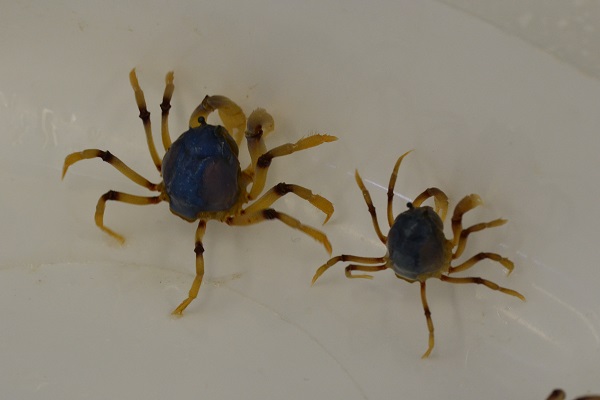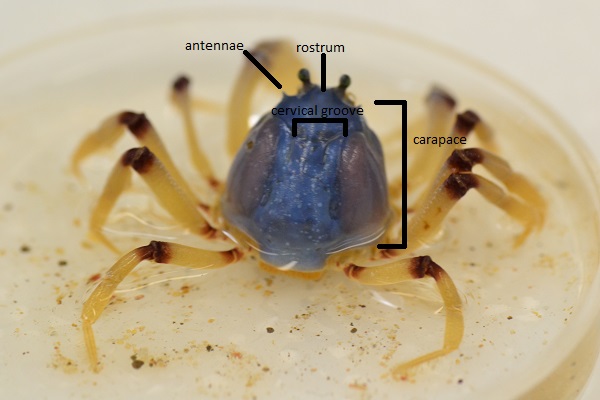Physical Description

The first thing striking about M. longicarpus is their bright sky blue body. As well as the distinctive sky blue colour of
the carapace, all adult M. longicarpus specimens have
a dark red band over each of their four pairs of walking legs, at the first and
second join of the appendages and at the join of the Chela to the rest of their
body. All Light-blue solider crabs can easily fit in the palm of your hand as their
carapace will reach no bigger than 25mm in width and will weigh no more than 12 grams (Farrelly & Greenaway 1987), although many individuals may
not reach this size. There is no sexual dimorphism in this species (Davie, 2011).
Distinctive to the Mictyris
genus, is the deep globular shaped carapace which is has a greather length than
width (David et al. 2010). Another identifiable morphological characteristic
of the Mictyris genus is the broad,
exterior maxilliped 3. The buccal cavity of M.
longicarpus is oval shaped, large and completely closed off by two rounded,
foliaceous maxillipeds 3 (Poore, 2004). A useful identification tool of determining M. longicarpus from other species of its
genus is the less pointed, more sub-pentagonal rostrum located on the
cephalothorax (Poore, 2004).
The dorsal surface
has well defined cervical and cardiobranchial grooves which makes the regions
of the cephalothorax easily distinct and arched (David et al. 2010). The
posterior end of the carapace is bordered by bristles. It does have antennae
but they are small. Its eight walking legs are all very slender as is their two
chelipeds (David et al. 2010). The chelipeds are elongated and although slight
variation, have no significant difference in size, unlike other crustaceans
such as the Fiddler Crabs. The two eyes
are exposed and located on the eye stalks on the dorsal surface (David et al.
2011).


All photographs taken by Kate Buchanan at the University of Queensland St Lucia Campus, 2013. |